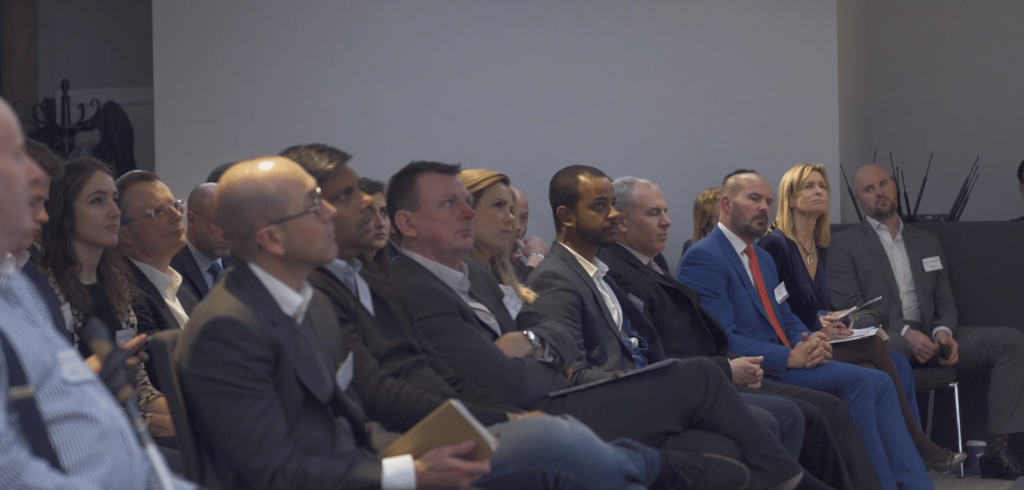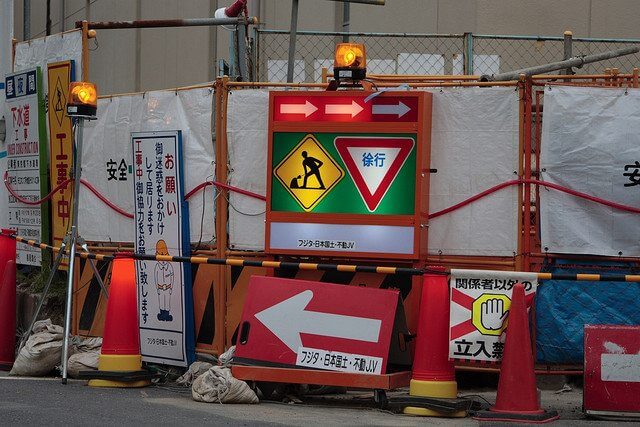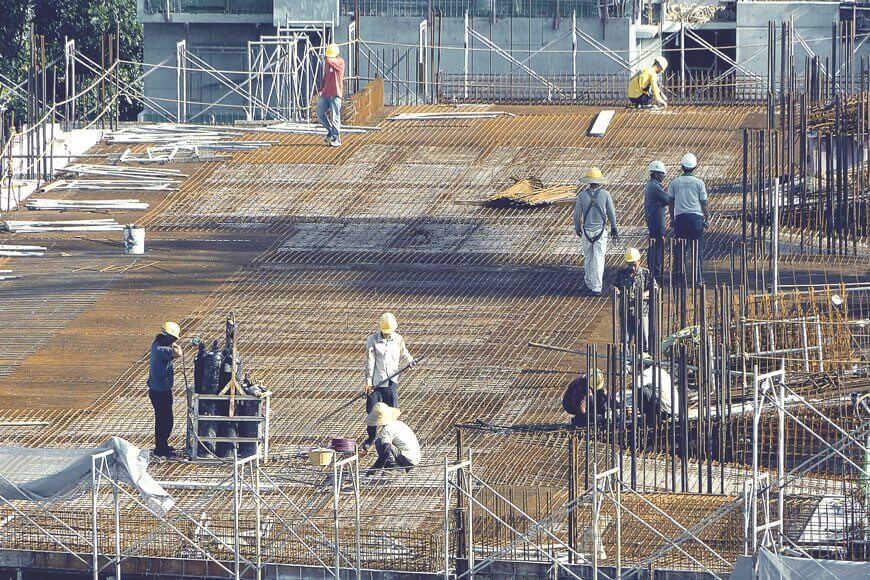“Digital innovation is the number one priority in construction.”
That point, as expressed by Jason Ruddle UK MD at GenieBelt, was one of the most vital conclusions of the European ConTech Summit 2019 that took place in London at the end of January.
LetsBuild was extremely proud to host this great discussion in collaboration with BIMobject and Construction News! Some of the biggest thought leaders in construction came together and exchanged knowledge and ideas about the digital transformation of the industry.
Without a doubt, the big news of the night was the announcement of the merger agreement between GenieBelt and APROPLAN. We join our forces to create LetsBuild and give our customers an end-to-end digital solution covering the construction phase with on-site planning, progress communication, and on-site follow-up communication.
In the course of the summit, top ConTech experts offered their view on the current state of construction, the future of the industry, and the numerous opportunities that are opening up for investors, construction companies and software providers.
“This event is about gathering people from all over Europe. We have investors, we have big contractors, we of course have some of the ConTech companies. All the different people that are interested in the European ConTech scene”, said Klaus Nyengaard, LetsBuild CEO.
Thomas Goubau, LetsBuild CCO, added:
“The event allows us to share all the experience that we have piled up and try to identify where we should go in the next 12 or 48 months.”
There is a tremendous potential for investment in construction technology, at the moment. But the industry needs to become better in storing, analysing and learning from their data.
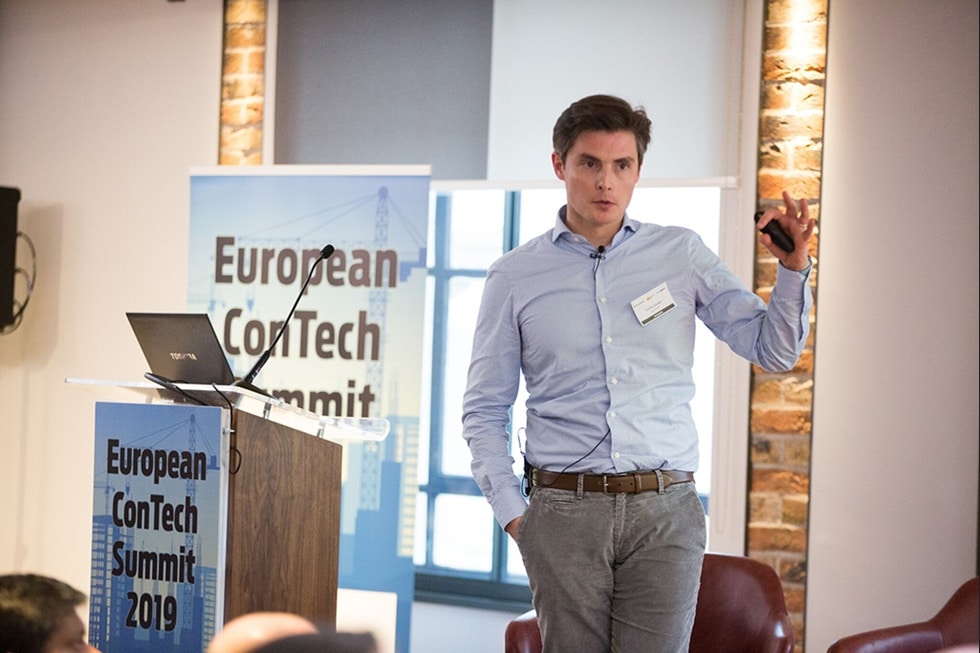
As Thomas Goubau underlined:
“People don’t use data. At the end of a project, the data gets put in a box. What’s needed is adoption on site. We can achieve a 45% reduction in project costs, but people need to organise themselves. We need someone who is in charge of data.”
According to Mr. Goubau, once the stakeholders in construction start taking good care of their data, they start noticing its immense benefits almost immediately. That change on the way the sector works with data can eventually be the catalyst for digital adoption in construction.
“When we help companies with their processes, users are coming back. User adoption will create more and better data.”, concluded Thomas Goubau.
Only 3% of businesses in construction see technology as an investment
Ulrik Branner, Executive and Board Member at GenieBelt, seems to agree with Thomas Goubau and points out that it’s time for construction to start seeing software as an investment instead of a cost.
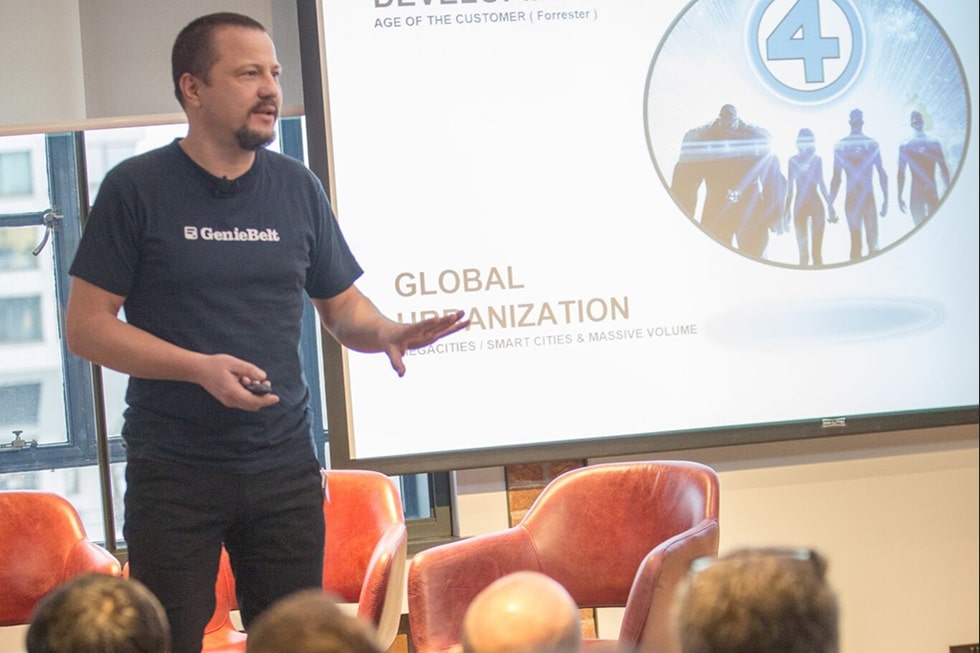
“The reality is that only about 3% (of businesses) see technology as an investment and spend 3-4% of their revenues on it. The rest spend 1% and see it as a cost. The 3% are making 12-15% margins while the rest are still making 2-2.5%. Why is there so much being written about digitisation but so little action taking place?”, said Ulrik Branner.
On top of that, Mr. Branner believes that digital transformation can only move forward if the entire industry focuses on the value of data and become better in collecting, storing and analysing it.
“Data is the foundation of information, but more than 90% of it is thrown away”, emphasised Ulrik Branner.
And he continued:
“That means the industry can’t improve. But clients are stepping up and are going to take more control. They have the power to change things. Whatever can be digitised will be digitised.”
The unholy trinity of structural change
In his keynote speech, Mark Farmer, Founding Director and CEO at Cast Consultancy, focused on three trends that are shaping the future of construction and which will eventually lead to a structural change of the entire industry.
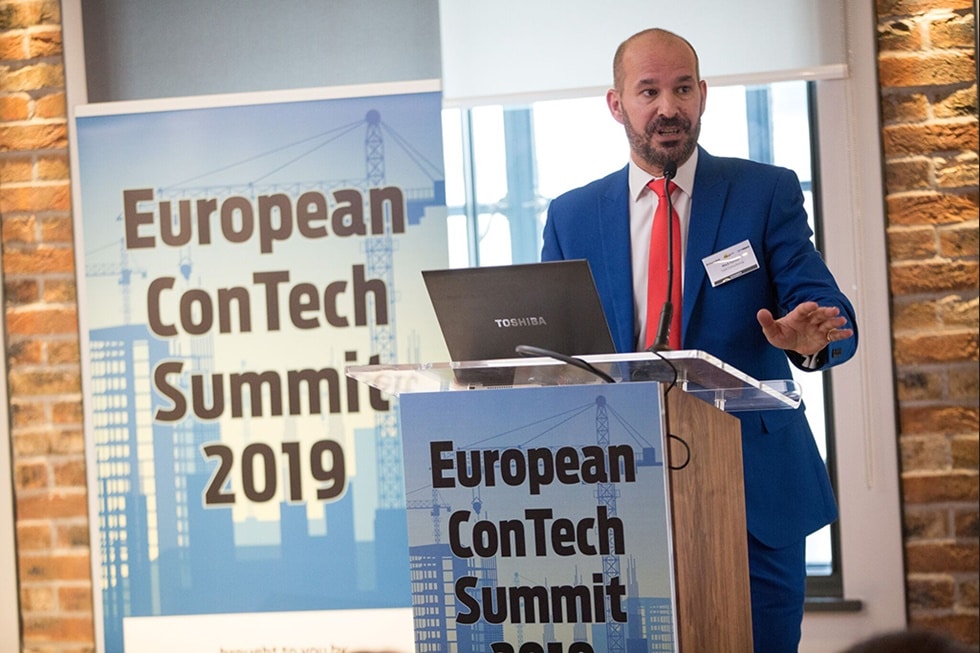
More specifically, these three trends could be summed up to the following:
- Demographic change (ageing workforce)
- Geopolitical change (free movement of labour, tariff-free transactions)
- Societal change (restricted talent pool as young people don’t see construction as a career).
“I do believe that we have a burning platform. We’ve had a lot of false dawns, but the industry is facing mega-trends that will force it to change: demographic change, societal change and geopolitical change.”, said Mr. Farmer who described the case of Carillion as a strong wake-up call for construction.
Nevertheless, Mark Farmer believes that technology will unleash three transformational themes:
- Worker augmentation: Generative parametric design tools and spatial computing will change skills needs across the design and construction process.
- Substitution and disintermediation: Advising consultants will be challenged on their “value-add” and data will be democratised and processes automated.
- Distributed manufacturing: Subtractive and additive manufacturing will get closer to the final site.
“It now looks like construction is just going to be a bit late to the modernisation party rather than never arriving at all”, concluded Mark Farmer.
“Construction is like an orchestra without a conductor”
During his talk, Matthew Jackson, Global Technical Director at BIMobject, parallelised the construction industry to an orchestra without a conductor due to the inability of its members to work together in a harmonious way.
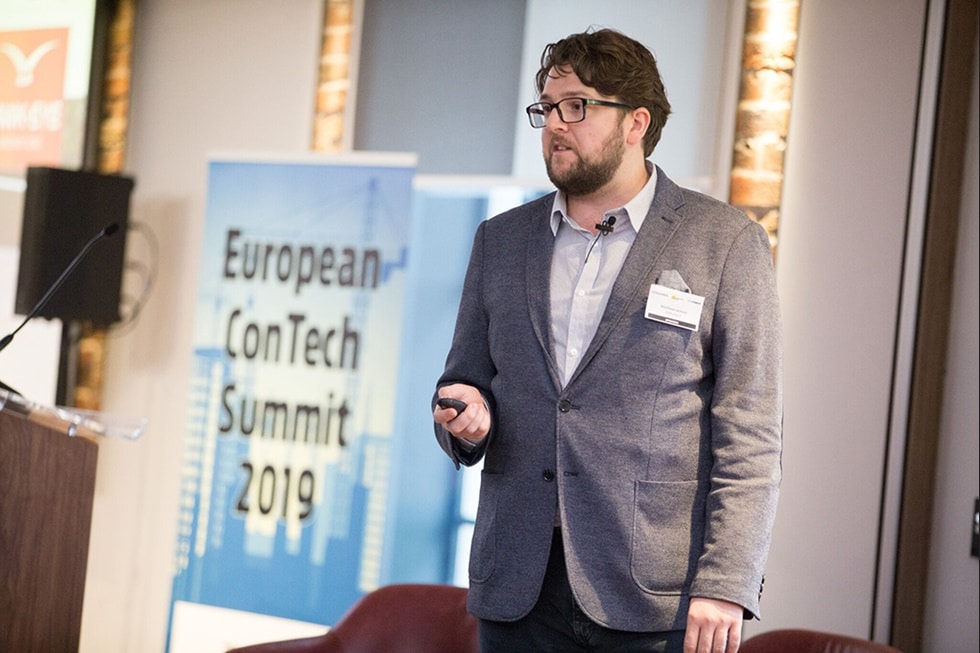
“The elephant in the room is that construction is an orchestra without a conductor. We sound terrible when we work together. We don’t have a common understanding of what we want to do.”, said Matthew Jackson.
Furthermore, Mr. Jackson referred to the need for an open digital ecosystem which would make possible for the stakeholders of the industry to communicate with each other and work efficiently.
But for that to happen, construction needs to get better in the boring things first:
“Data alone is boring, but the results it can yield are really interesting. Construction needs its own digital ecosystem so that we can talk to each other. The point is that we can’t do the cool stuff unless we do the boring things first.” , explained Matthew Jackson.
There is huge growth in construction, but…
Some very interesting points were made also by Niels Falk, Partner at HD Lab. In his keynote speech, Mr. Falk mentioned that the construction industry is continuously growing as it accounts for approximately 12-15% of most economies in the world.
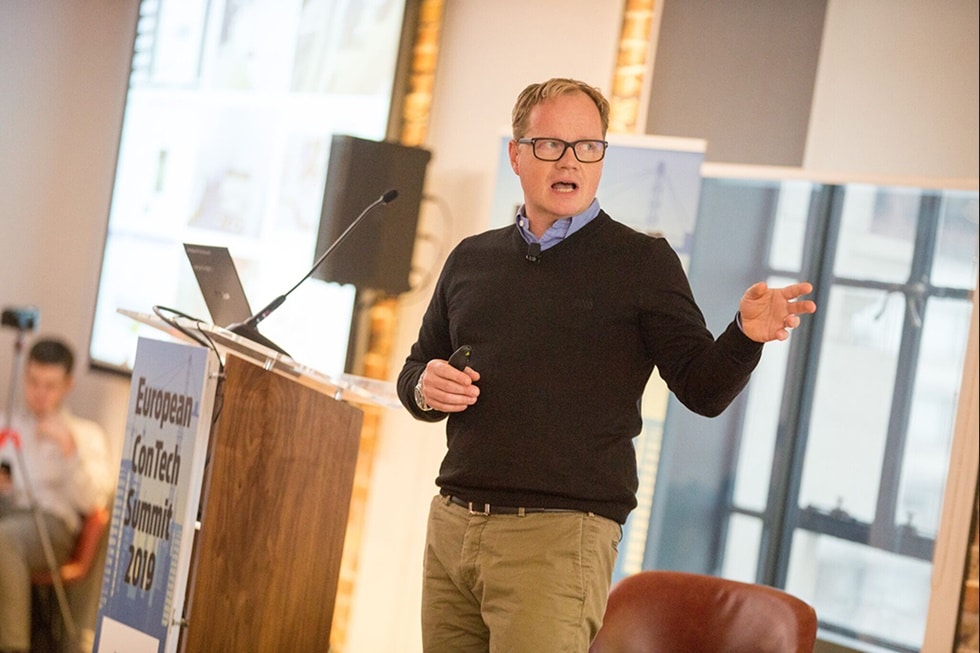
Despite its enormous size, though, the sector is under significant pressure as a result of the serious skills shortage in construction.
“However, there are also fewer labourers who want to work in construction for less time. They aren’t going to be sawing wood until they’re 70. So, there is more work but less capacity. It’s a horrible scenario.”, said Niels Falck.
Another parameter that should be taken into consideration has to do with the fact that the industry hasn’t managed so far to take the most out of digital solutions. After all, as Mr. Falck suggested, a lot of digital technology has already been there for 25 years now. That’s an area where the industry needs to become better soon.
Read also: ConTech expert Niels Falk – “Construction needs to stop running on tradition”
And he concluded by underlining that some fundamental changes are coming soon for construction as many businesses outside of the industry (eg. Unity) are gradually entering the field and trying to work in a more effective way than the traditional players in the sector.
Change has to come from the entire construction supply chain
Suzannah Nichol, Chief Executive at Build UK, participated also in the Summit and offered some very good remarks to the audience during her speech. Mrs. Nichol reminded the crowd that this has been a year full of challenges for the construction industry:
“With Brexit, dealing with the fallout from Grenfell and the collapse of Carillion, it’s been quite a year and I don’t think it’s going to get any easier.”
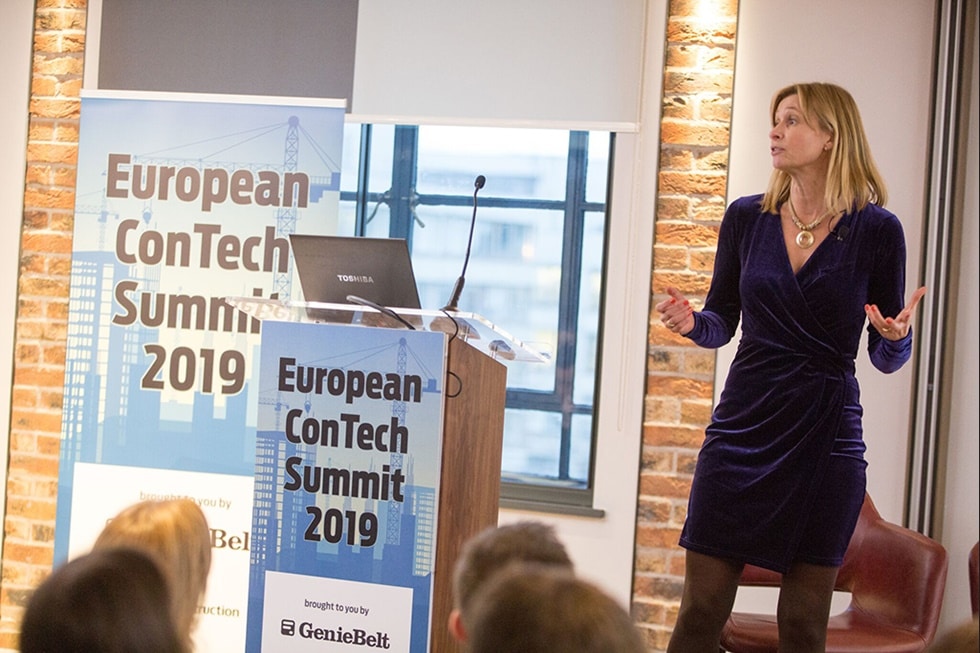
And she continued by mentioning three terms that are ready to take the construction industry by storm: digital, off-site and productivity. As she highlighted, construction is not doing well in any of those, but they are the future.
If the sector doesn’t change, someone from the outside will come in and take it away.
But for that paradigm shift to be successful, the change has to come from the entire supply chain. And this is where the contribution of the digital tools is deemed to be valuable.
“The potential for digital tools in our sector is absolutely enormous. They ‘ve got a lot of potential in offsite, in design, in the true implementation of BIM. The opportunities are endless but we need to change some of our business practices so we can realise the potential.”, concluded Suzannah Nichol.
More content to come soon!
That was only a first analysis of what happened in the European ConTech Summit 2019. Make sure that you stay tuned as more videos and content from the event will come soon in our blog.
